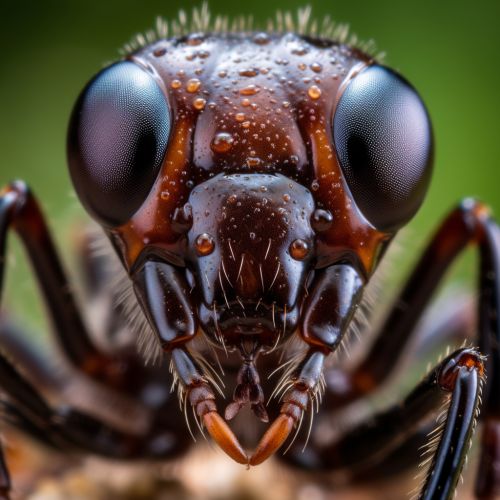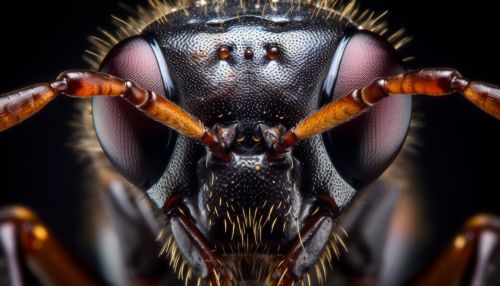Ant
Introduction
Ants are a group of insects that belong to the family Formicidae and are part of the order Hymenoptera, which also includes bees and wasps. They are known for their highly organized colonies and nests, which sometimes consist of millions of individuals. Ants have been able to inhabit a wide range of ecological environments and can be found almost everywhere on Earth.
Evolution
The earliest ants evolved from wasp-like ancestors in the mid-Cretaceous period between 110 and 130 million years ago. They diversified after the rise of flowering plants. More than 12,500 out of an estimated total of 22,000 species have been classified. They are easily identifiable by their elbowed antennae and a distinctive node-like structure that forms their slender waists.
Morphology
Ants are distinct in their morphology from other insects in that they have a hard, waterproof exoskeleton, which provides defensive, sensory, and respiratory functions. This exoskeleton is covered in layers of protein and chitin. Ants have compound eyes made up of many tiny lenses attached together. Ant eyes are good for acute movement detection, but do not offer a high resolution image. They also have three small ocelli (simple eyes) on the top of the head that detect light levels and polarization.


Behavior and ecology
Ant behavior and ecology are complex and diverse. Ants have a wide range of social structures, from solitary hunters to highly organized colonies. Some colonies have a single queen while others may have multiple queens. Ants communicate and coordinate their behavior via pheromones and touch.
Communication
Ants communicate with each other using pheromones, sounds, and touch. The use of pheromones as chemical signals is more developed in ants than in other hymenopteran groups. Like other insects, ants perceive smells with their long, thin, and mobile antennae. The paired antennae provide information about the direction and intensity of scents.
Reproduction and life cycle
The life cycle of the ant consists of four stages: egg, larva, pupa, and adult. Fertilized eggs produce female ants (queens, workers, or soldiers), while unfertilized eggs produce male ants. The role of the queen is to lay eggs, while the role of the worker is to forage for food, care for the queen's offspring, work on the nest, protect the community, and perform other duties.
Relationship with humans
In some cultures, ants are used in traditional medicine and as food. Some species are considered as pests, primarily those that invade homes seeking food, those that are venomous, and those that damage crops and infrastructure. Some species, however, are beneficial in their roles as predators of pests, soil turners, and sources of food.
